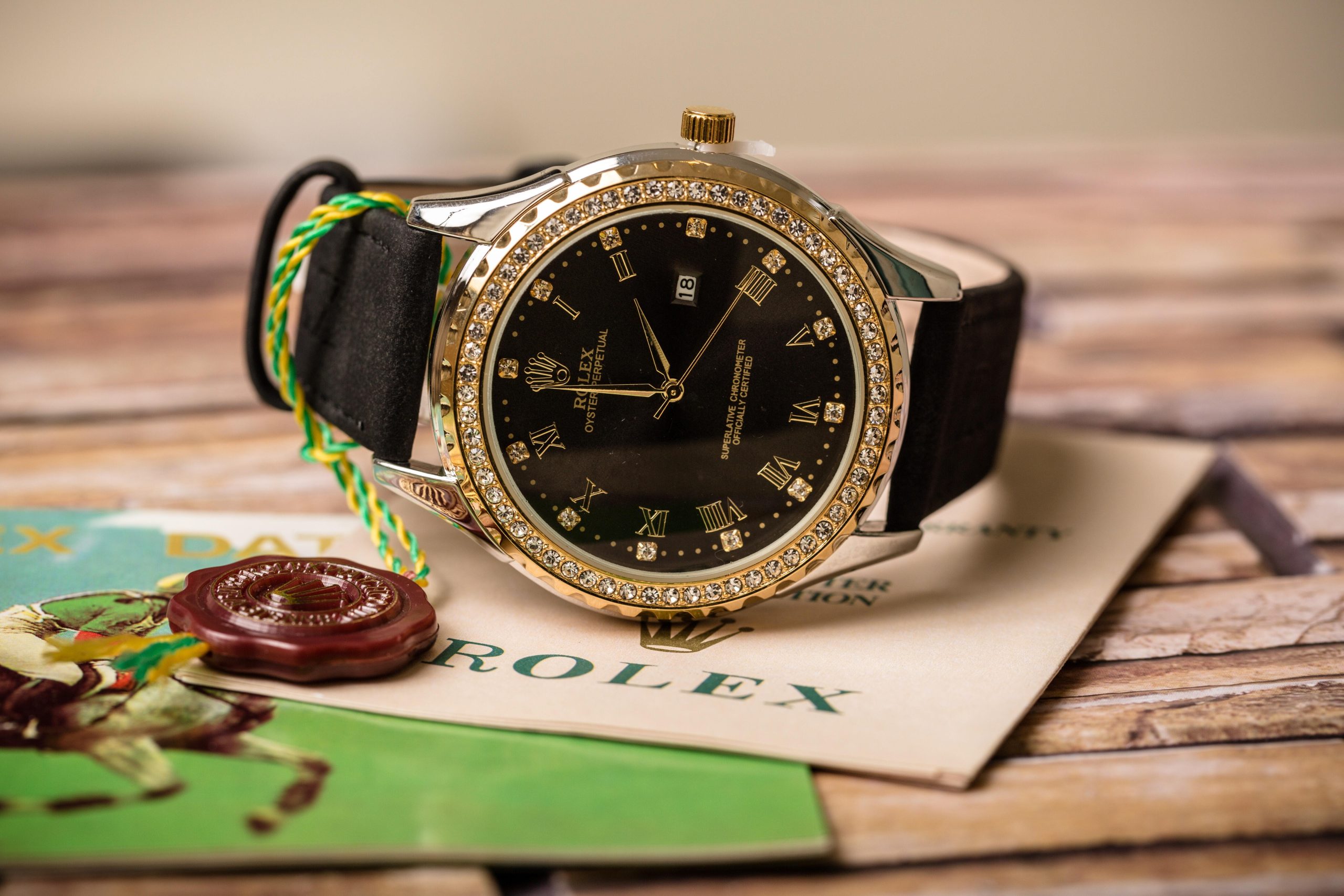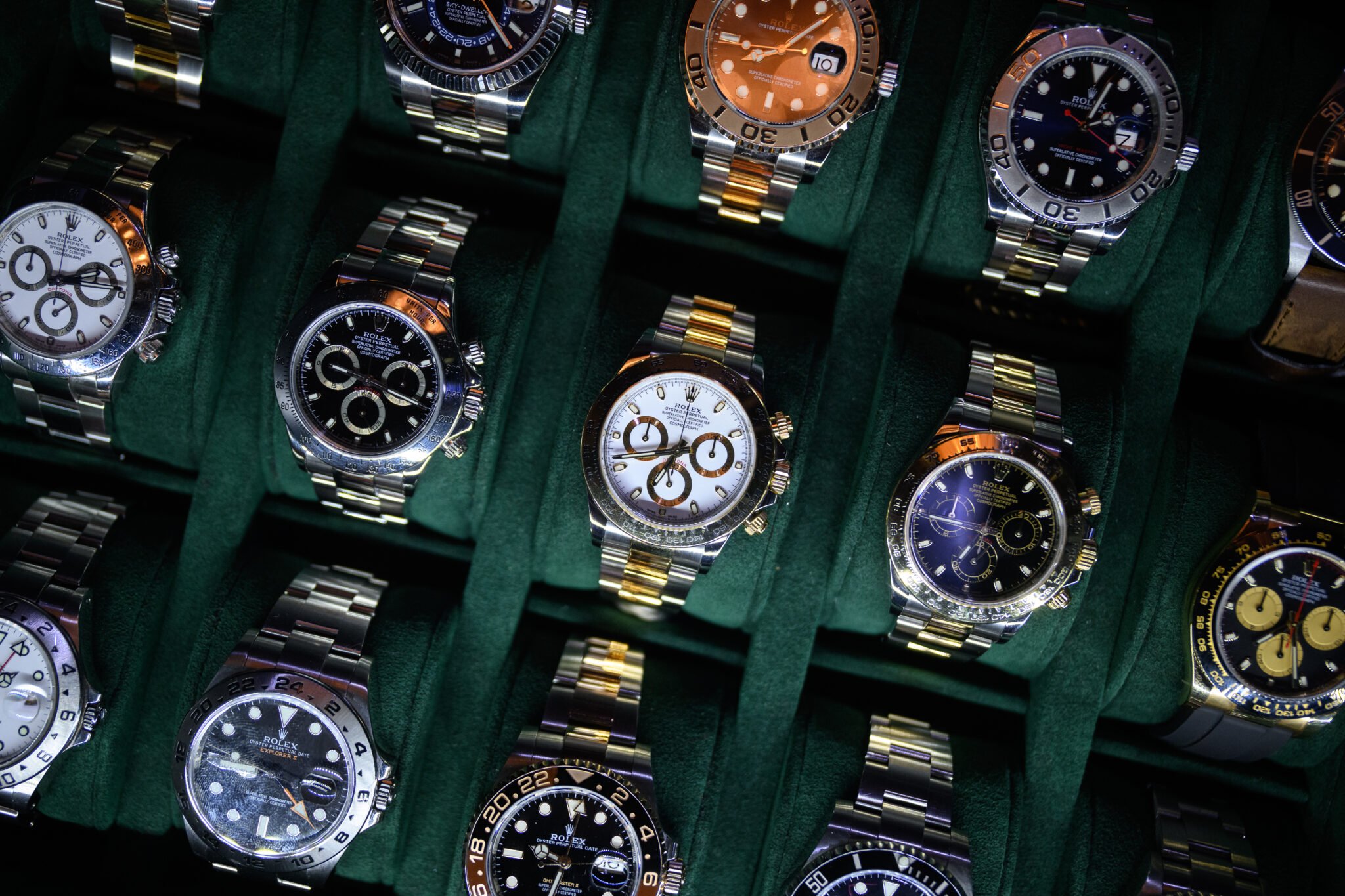Collecting luxury items is an exciting pursuit, but owning them also comes with the inherent risk of theft. Timepieces have long been a target of such crimes. You can trace it back to the 1700s when watches first rose in prominence as a luxury item. In her book Hands of Time, award-winning designer, watchmaker, and historian Rebecca Struthers writes of 18th century England, saying “the proliferation of watches was matched by a surge in pickpockets and street robbers” and goes on to add that these “stolen watches were quickly and easily disseminated into London’s criminal underground through pawnbrokers and second-hand shops.”
In more recent years, you may recall one of the most notorious watch heists in history of Breguet’s Marie Antoinette pocket watch in 1983 or the infamous “Bling Ring” who robbed Orlando Bloom of ten prized watches in the early 2000s. Countless celebrities, from tennis champion Rafael Nadal to the late James Gandolfini, have made headlines with their stolen watches, but now, thieves have expanded their sights beyond those in the spotlight and into the mainstream.

2022 Marked a Record Year for Watch Thefts
According to The Watch Register, a major global database for tracking lost or stolen timepieces, approximately 6,815 watches worth more than $1.3 billion were reported stolen or missing in 2022, marking a 60% increase from 2021. This year, the numbers are continuing to grow. Registrations of watches lost or stolen in the U.S. have spiked 106% in 2023 compared to those that occurred during the same time frame in 2022.
As we’ve seen historically, law enforcement has noted that celebrities have been a greater target for such thefts thanks to their widespread presence and visibility. Social media platforms, like Instagram and YouTube have long served as a place for celebrities to flaunt their collections, which has not only made them more vulnerable to potential threats but also helped prominent watch models become more recognizable to previously untrained eyes.
Key Brands and Markets Getting Hit the Hardest
Among the reports from The Watch Register, the number of thefts is particularly concerning in a few key markets and for a few key brands. A whopping 47% of the thefts have been reported in England with the U.S. and Germany next in line at 9% each. In addition, Rolex is the brand with the highest frequency of being lost or stolen, representing 44% of the timepieces reported to The Watch Register’s database and valued at $550 million with the Daytona, GMT, and Oyster Perpetual being the most frequently stolen thanks to their level of demand, growing waitlists in the primary market, and high value in the secondary market. Omega and Breitling come in next at 7% and 6% respectively.


The growing number of stolen Rolex watches in England first came into the spotlight back in 2021 when a group called the “Rolex Rippers” executed a slew of successful robberies in London and the surrounding areas. The gang’s initial approach targeted celebrities who had made the mistake of sharing their collections on social media. However, the “Rolex Rippers” later expanded to the mainstream, with attacks on civilians leaving museums and pubs. According to The Independent, in the six-year period between 2015 and 2021, the number of stolen watches recorded in England and Wales nearly doubled from 6,696 to 11,035 thanks to groups like the “Rolex Rippers,” who are now facing hefty jail sentences for their crimes.
Crime Increase Correlates to the Growth of the Secondary Market
In one sense, this rise in thefts is directly correlated to the rise of the pre-owned watch market. Recently, the secondhand market has exploded into a $27 billion dollar business and is expected to hit $85 billion, thereby outselling new models in the next decade, according to a report by the Swiss firm LuxeConsult. The boom in the past few years in particular is largely due to the pandemic, which, for many big brands, brought production of new watches to a screeching halt. Watches are inherently time-consuming to produce thanks to their intricate mechanics and abundance of decoration and hand finishing, so recouping that lapse in production hasn’t been quick or easy. As a result, many boutiques have been left with countless “for display only” signs on their watches, waitlists for popular brands and models have mounted to epic proportions, and the demand in the pre-owned market has soared. One could argue, there has never been a better time to sell a timepiece, and thieves have seized the moment, hoping to get a piece of the very lucrative pie.
The state of the secondary market in combination with a growing inflation rate, elevated interest rates, restrictive Fed policy, tight lending standards, and fear of a recession may contribute to the growing number of thefts. However, there’s more to the story and more at play in terms of the recognition and attention to these thefts by law enforcement. Many authorities are finally beginning to recognize that watch theft may only be the tip of the iceberg as more and more watch thefts are able to be linked to larger organized crime groups and bigger crimes, like money laundering and embezzlement.
New Solutions for Customers
In addition, brands are starting to take the thefts more seriously and are working to offer solutions for their customers. In April of this year at the international watch and jewelry trade show Watches & Wonders, the luxury group Richemont—home to some of the biggest brands in the watch industry like Cartier, Jaeger LeCoultre, and Vacheron Constantin—announced the creation of their new platform called Enquirus. This free service allows watch and jewelry owners as well as industry partners to register, declare, and search for lost and stolen watches and jewelry using the watch’s serial number through individual or business accounts. Anyone involved in buying, selling, and collecting pre-owned items to confirm their lost or stolen status, offering peace of mind and assisting law enforcement agencies to collaborate across borders. Another prominent brand, Audemars Piguet, also announced a new policy around the same time, which adds theft protection to its existing complimentary two-year coverage service on watches purchased in Audemars Piguet boutiques, AP Houses, or via official retailers and offers the option of replacement or reimbursement should the watch get stolen at home or while traveling.
How Collectors Can Protect Their Watches—Experts Weigh In
It’s certainly encouraging to see brands getting more proactive and providing solutions for their customers to protect their watches against theft. However, some of the leading experts seem to feel this isn’t enough. According to Joshua Ganjei the CEO and Head Curator of European Watch Company, a multigenerational family owned business and one of the leading pre-owned watch retailers for over 30 years, these individual registries are missing the mark and the industry is lacking a unified database to track the lifecycle of a timepiece. Other experts agree. Tannie Ng the Vice President of Art, Jewelry, and Valuable Collections Management at Chubb, the largest insurer of high net worth families in the U.S. and top insurer for America’s billionaires shared that they report all stolen watches to each of the different databases out there, but one of the biggest challenges within the industry overall is that there is not one centralized database available. That said, both Ganjei and Ng implore collectors to take protective measures into their own hands.
For Ng, there are two crucial things that collectors can do to protect their watches at home. The first is a central monitor alarm system. “It’s important that the system is comprehensive,” emphasized Ng. “We see break ins happen easily where a thief will scale to the second floor level of a home, they’ll break into a window that doesn’t have a glass break sensor so that alarm doesn’t sound. So really having that comprehensive alarm system is a first layer of protection.” The second layer of protection is a high security safe, but according to Ng, not all safes are created equal. “We define a high security safe as one that’s over 750 pounds so it’s not easy for one person to move,” shared Ng. “And then you want what we call a security rating of TRTL 30×6. That essentially means that it’s going to take at least 30 minutes for someone to use a professional torch and tools to break into a safe.”
Ng was also eager to share a few tips for collectors when traveling with their watches. Her first couple suggestions seem pretty basic but are worth reinforcing. “If you’re going to wear a watch when you’re traveling, be mindful of which watch you pick and choose something that’s going to fly under the radar. Maybe don’t take your Patek Philippe 5711. Then, if you’re going to travel with multiple watches, make sure to keep them in a nondescript case that’s not easily identifiable, and always keep them in your carry on and be sure the bag remains on your person or within sight.” Ng had one last precaution you can take once you arrive at your destination. “Don’t use the in-room hotel safe,” Ng cautioned. “Every one of those safes has default codes that all of the staff in the hotel have access to. Instead, speak to the hotel about storing your watches in their main vault.”
Navigating a Pre-Owned Market Saturated with Stolen Goods
Beyond protecting your current collection from theft, it’s equally imperative to be a discerning buyer in the secondary market with the growing influx of stolen goods. With the pre-owned market booming and more and more pre-owned dealers coming onto the scene, Ganjei emphasized the importance of shopping at reputable retailers who are properly vetting their watches. He suggests looking for pre-owned retailers that keep watchmakers on staff who will perform a full service on the watch and check the serial number against available databases. Ganjei also recommends looking at the pre-owned dealer’s warranty policy, which provides an added layer of trust in the seller’s confidence in their goods. Still the most important piece of advice he shared is looking for a pre-owned watch with a complete set, chiefly box and papers, as an indication of authenticity from the original owner.














